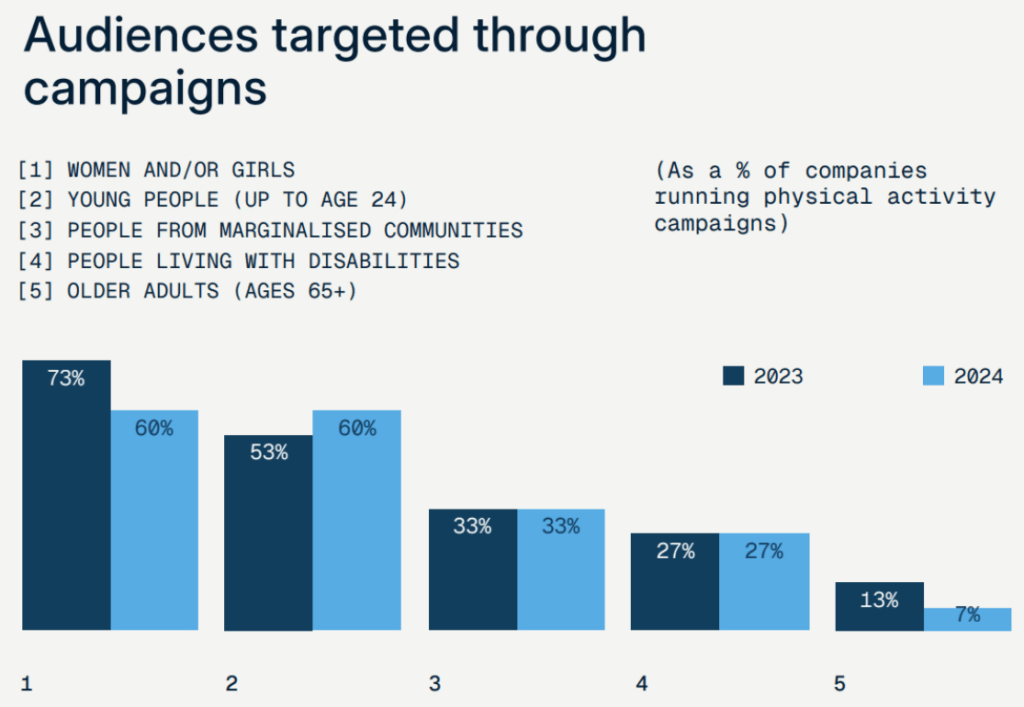The World Federation of the Sporting Goods Industry (WFSGI) have shared their 2025 report. It contains case studies from major sports company members.

Over the coming weeks Meg will look at what we can learn from these case studies, starting with learnings from Campaigns.
The WFSGI global focus (using WHO data) claims:
- Nearly one-third (31%) of adults worldwide did not meet the recommended physical activity levels in 2022 — totalling 1.8 billion people
- The numbers for children show 81% of adolescents aged between 11 and 17 are physically inactive, with girls at higher risk than boys (85% vs. 78%)
80% of the WFSGI members ran campaigns aimed at audiences at risk of inactivity – recognising the mental and emotional barriers to activity and presenting activity as a cathartic experience accessible to everyone, no matter your fitness level. The report includes studies from New Balance, PUMA, ASICS, and Decathlon.
They say:
Whether it’s redefining running for everyday people or encouraging desk-bound employees to take short movement breaks, these campaigns are changing the way the public sees physical activity. They show that you don’t have to be an athlete to move — you just need the courage to start.
The summary of Campaigns is:
- Campaigns are a powerful way to transform how we talk about and approach sports and movement
- We’re already seeing shifts in stereotypes for women, girls, and people from racial and ethnic minority backgrounds
- By highlighting a variety of journeys and experiences, we take an important step toward reshaping the narrative, making movement both imaginable and accessible for even more people

